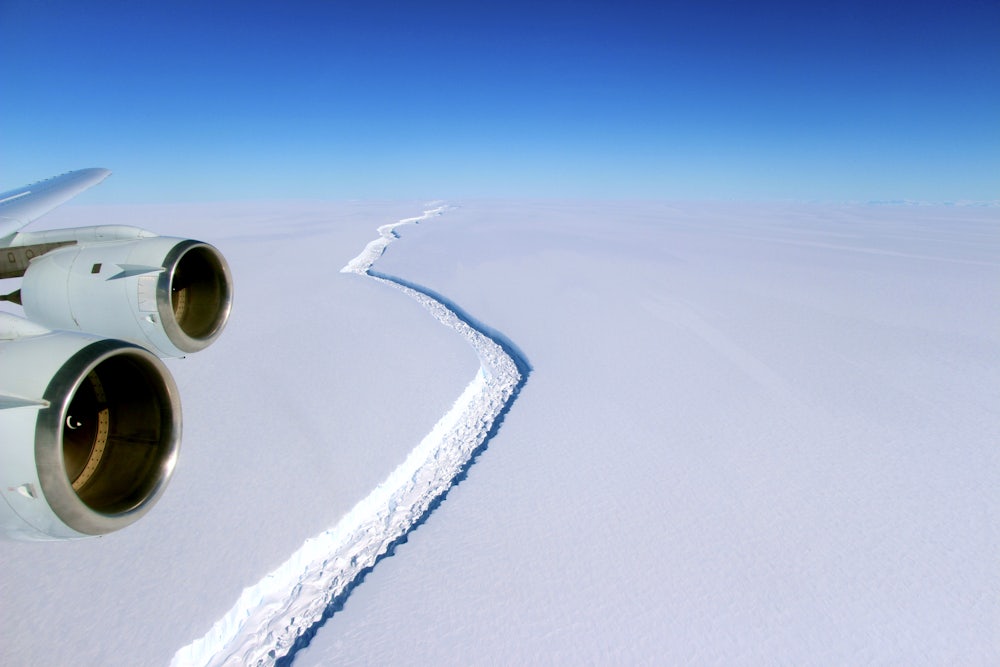A trillion-ton, 1100-feet-thick chunk of ice—about the size of Delaware, or half the size of Jamaica—has officially broken off the Larsen C ice shelf in northwest Antarctica, creating one of the largest icebergs ever recorded. People are freaking out.
An iceberg with twice the volume of Lake Erie has broken off the Larsen Ice Shelf, 'leaving the continent forever changed'
— Bill McKibben (@billmckibben) July 12, 2017
An iceberg weighing over 1 TRILLION tons just broke away in Antarctica and America's got Trump as it's President denying climate change.
— Jenius (@PersianCeltic) July 12, 2017
regardless, it's one of the biggest iceberg calving events we've ever witnessed. which is cool, impressive, and a bit scary. mostly cool imo
— Maddie Stone (@themadstone) July 12, 2017
A few things to note about the break.
- Scientists widely expected this to happen. A crack in the ice shelf appeared in 2014, and grew to be more than 120 miles long before it finally separated from the ice sheet, birthing the massive berg into the ocean. Before the break, Larsen C was the fourth-largest ice shelf in the world. Post-break, it is now the fifth-largest.
- The glacier will melt, but it likely won’t contribute to sea-level-rise. Scientists predict the new iceberg will survive about eight to ten years before it completely breaks apart and melts, but there’s not much to worry about for sea-level-rise. Only ice that’s not already in the ocean—in other words, land ice—contributes to sea-level-rise when it melts. The Larsen C ice shelf was already floating on the water when the iceberg broke off.
- There’s a dispute about whether the break was completely natural, or influenced by climate change. As glaciologist too early to blame this event directly on human-generated climate change.” Others disagree.
Climate change doesn’t have to be the explicit cause of this particular event for it to be a reminder of why we need to act. Climate science shows that global warming creates a world where things like this happen more often than they would otherwise. As Ellyn Enderlin, a research assistant professor at the University of Maine’s Climate Change Institute, told me: “We don’t know whether this particular break was really something caused by climate change, because it’s a natural cycle—ice shelves get pushed out further and pieces break off. But yes, as the climate continues to warm, we’ll see more icebergs breaking off from glaciers and ice shelves.”
The Larsen C ice shelf has broken away from Antarctica, a jarring reminder of why we must solve the climate crisis. https://t.co/3ddOminhX3
— Al Gore (@algore) July 12, 2017
